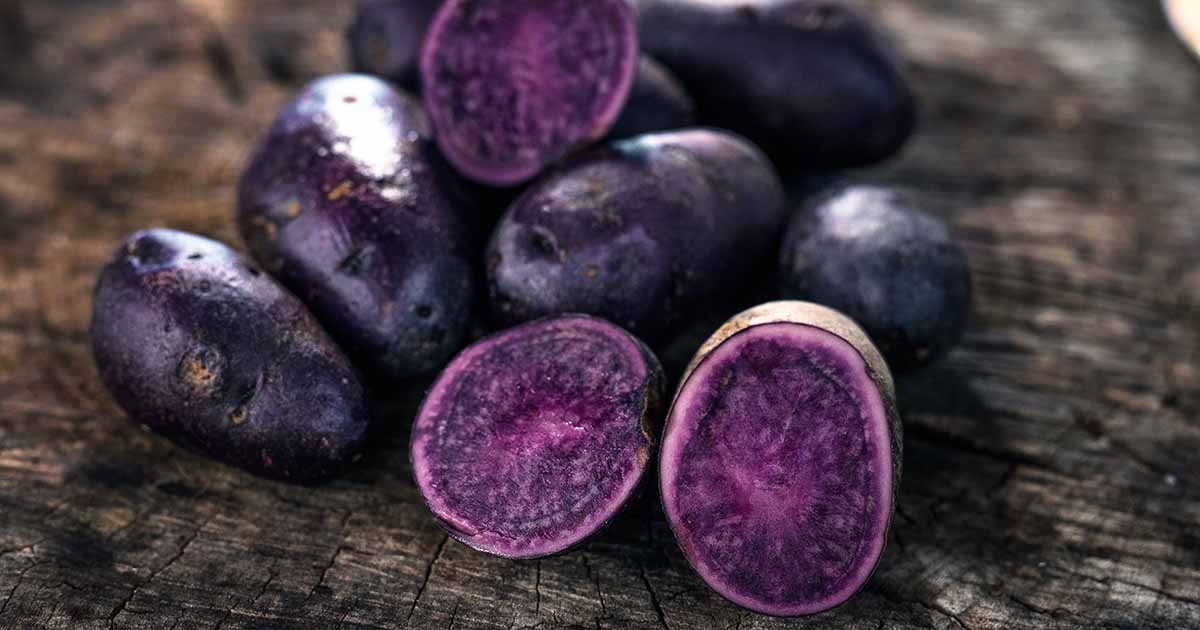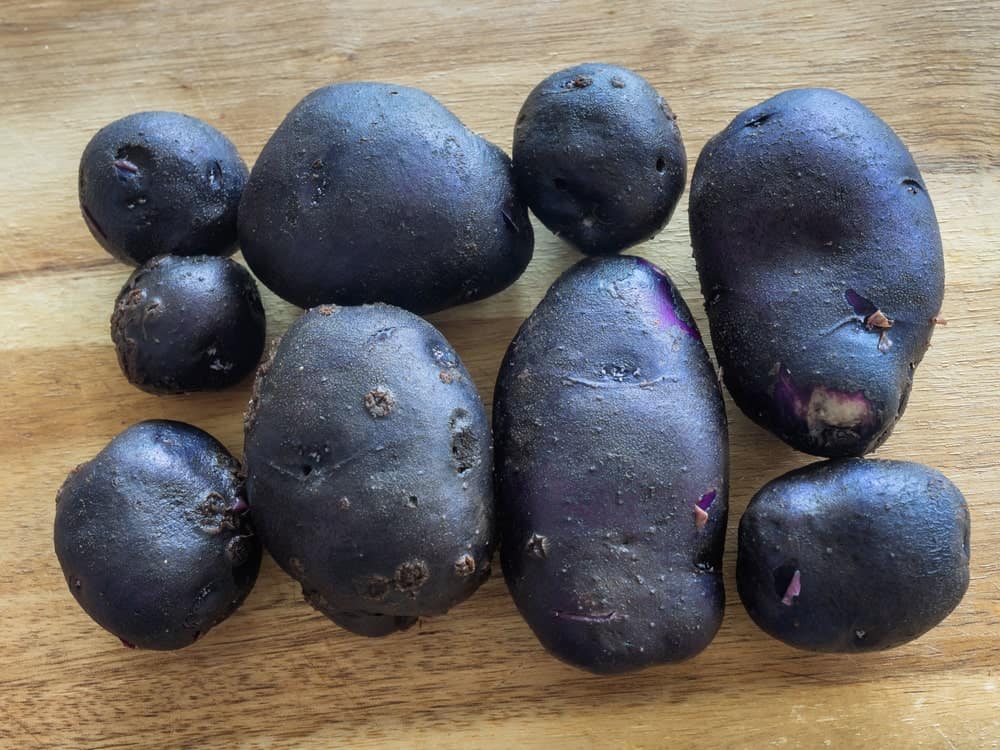Blue Potato Varieties: Expert Analysis for Optimal Selection and Use

On a brisk April morning in 2021, I knelt beside a row of newly tilled soil, hands half-numb from the cold, holding three different blue potato seed tubers. Adirondack Blue looked like a chunk of lapis lazuli; Purple Majesty almost black in the overcast light; All Blue had streaks that reminded me of stormy skies. I’d failed at container potatoes the year before—overwatered, then forgot about them during a heat wave—so my confidence was shot. But curiosity always wins out. That year, I made it my mission to figure out which blue potato belonged in my garden (and on my table), not by theory but through trial and error.

Here’s what worked—and what absolutely did not—after several seasons digging up both victories and duds with these unconventional spuds.
The Standouts: Blue Potato Varieties That Actually Deliver
You’ll find plenty of varieties online, but after tasting dozens and growing six types side-by-side, only some are worth your time if you want color and flavor to survive real-world conditions.
Adirondack Blue: Reliable Performer
- Grows best: If your soil drains quickly and you can commit to regular watering without flooding (I learned this the hard way after roots rotted in clay pockets one wet June).
- Harvest window: 100 days from planting—mine were ready around July 25th when planted April 15.
- In the kitchen: Roasts up creamy and holds its electric-blue color better than any other variety I’ve tried—even as leftovers two days later.
- Pro tip: For salad potatoes that don’t turn gray, boil whole with skins on and only slice once cool.
Purple Majesty: Visual Powerhouse
- Showstopper: Slices look almost fake—a deep amethyst even after 30 minutes at 425°F.
- Texture warning: Slightly drier than All Blue when baked, so add an extra tablespoon or two of butter for mashed.
- Sweet spot: Best for baking whole or smashing; frying produces an odd neon hue that’s divisive at family brunches (my niece called them “alien fries”—not a hit with everyone).
- Anthocyanin content: Tested mine with pH strips—the flesh actually turned brighter purple when mixed with lemon juice.
All Blue: Heirloom Versatility
- Why it lasts: Tolerant of uneven watering cycles—my patch survived a weeklong vacation with no irrigation in August.
- Storage test: Kept well for three months in a dark pantry at ~45°F before sprouting appeared.
- Taste test: Earthier than Yukon Gold but less grassy than Russian Blue; makes striking mashed potatoes if you use red onions and vinegar for contrast.
- Garden bonus: Grew these right next to tomatoes without any disease crossover (which happened when I grew Peruvian Blues too close to eggplants).
How To Choose: No-Nonsense Selection Tips
Forget catalog photos—they’re rarely accurate. After losing half a crop to “certified” seed from big-box stores (infected with soft rot), here’s how I now source reliably:
1. Buy local if possible:
Farmers’ market tubers grow surprisingly well if inspected for scab or rot scars. Ask vendors how they store their own stock—if they shrug, reconsider. My best yields came from tubers purchased directly from small-market growers who hand-select their seed each spring.
2. Use reputable online sources early:
Fedco Seeds ships fast in late winter; Seed Savers Exchange has rare options but sells out by February most years. Order by January if you want choices—especially samplers if you want to experiment without buying pounds of one type.
3. Avoid grocery store potatoes as seed:
Tried this twice—both times got sickly plants thanks to invisible viruses or growth inhibitors sprayed by suppliers.
Getting Results In The Kitchen (and Table)
After four years testing recipes on skeptical friends (and sometimes myself), there are tactics that consistently keep those blue hues vibrant:
Keep The Skins On
Boiling peeled blue potatoes is almost guaranteed heartbreak—the flesh goes muddy-gray within five minutes. Instead, parboil whole until just tender (about 18–22 minutes), let cool slightly, then cut or smash while warm.
Acid Is Your Friend
A teaspoon of white vinegar or lemon juice stirred into mashed blues sends their color from dull periwinkle back up to gemstone status—it’s chemistry in action! This also helps balance earthy undertones if your guests aren’t used to strong-flavored spuds.
Roasting Trumps Boiling
For color retention and texture: toss thick slices or wedges with olive oil, kosher salt, and toss on rosemary stems directly on the tray at 425°F for ~28 minutes. You’ll hear them sizzle as starch caramelizes—and see saturated violets once plated.

Real Talk About Leftovers
Expect day-two blues to lose some vibrancy unless sealed airtight and reheated gently—not microwaved—which dries them out and dulls colors further.
Real Problems & Their Fixes
Every beautiful result had its share of botched batches along the way:
Failed First Attempt #1 – Storage Fiasco
Stored my first harvest in paper bags under the sink… mold city within two weeks thanks to ambient humidity above 60%. Solution? A wire basket on basement shelving kept temps steady (~48°F) and allowed airflow—no more slimy regrets since then.
Failed First Attempt #2 – Color Disappointment
Initial excitement crashed when boiled slices faded into drab purple-gray mush; found out later that alkaline tap water was leaching pigment fast. Switched to filtered water plus a dash of lemon juice—problem solved immediately.
Failed First Attempt #3 – Texture Troubles
Tried making gnocchi using Purple Majesty—the mix was so dry it barely held together. Now I blend two-thirds All Blue (creamy) with one-third Purple Majesty for dumplings that hold their shape without turning gummy.
Cost & Yield Reality Check
Based on personal harvest logs:
- Three pounds of certified seed ($18–$25 including shipping) translates into roughly 15–20 pounds yield per variety under normal suburban conditions (zone 6b). Yields drop by up to 40% during dry summers unless mulched heavily—I measured output weighed post-cure each season.
- Expect about $1 per pound grown—including inputs like fertilizer and mulch—but market prices can be $3–$6/lb for organic blue potatoes depending where you live.
- Worth noting: All Blue averaged highest yield per plant every single year so far, especially if hilled twice during growth period.
Recipes & Serving Ideas That Get Eaten
The dish that finally converted my “blue food is weird” holdouts? A roasted potato medley (half Adirondack Blue/half Yukon Gold) tossed hot from the oven with garlic confit oil and chopped parsley—a literal conversation starter because people couldn’t believe blue could taste buttery-smooth and look wild on the plate!
Other favorites:
- Layered gratin using alternating rows of thin-sliced blues and reds—with smoked gouda between layers
- Grilled baby blue skewers brushed with miso-butter
- Chilled marinated “smashed” blues atop peppery arugula salads
Serve any version at your next potluck—they’ll disappear faster than plain old russets ever did around here.
Final Takeaways From The Ground Up
Blue potatoes aren’t just gimmicks—they’re versatile workhorses if you pick smart varieties and treat them right from day one:
- Start early each year; buy healthy seed tubes before March rolls around
- Plant where drainage is solid—even a single soggy week can ruin yields
- Keep experiments small until you know what works in your microclimate
- Don’t sweat imperfect results—the fun is discovering new flavors/colors each season
If you find yourself grinning over an unexpectedly purple forkful come harvest time, you’re doing it right—even if last year’s batch was mostly compost fodder! The best solutions stick because they’ve been stress-tested by real dirt under real fingernails—not just theory passed around online.
So go ahead: pick one new variety this season, jot down what happens—in flavor notes and failures—and let those stories make your table as colorful as your garden plot next year.



